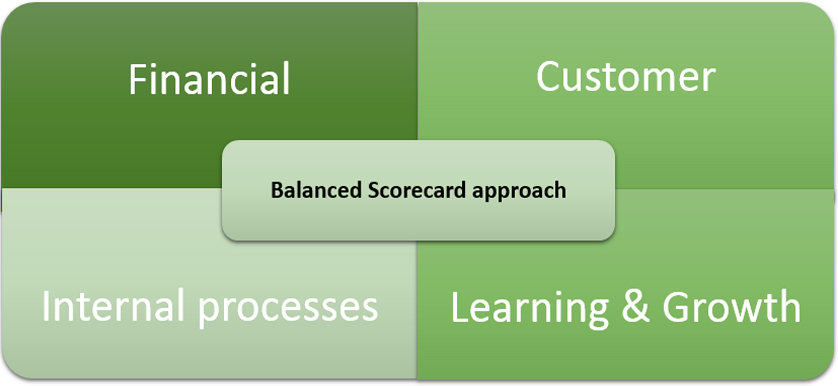Building a successful performance management system: processes and tools

Image source: Carlos Esteves | Unsplash
Any successful and developed performance management system must include the following main stages: planning, implementation, evaluation, and improvement.
Institutional performance management begins with the planning stage, which ends with the preparation of the strategic plan—a plan developed for several years that aims to bridge the gap between the current situation and the desired future vision. Determining the plan’s link with financial planning and the rest of the material, human, and technical resources and property, as well as at the planning stage there is a link with the general framework of risk management as it is necessary to determine the type of risk that could impede the implementation of the strategic objectives and how to deal with the risk during its occurrence, which requires the existence of institutional agility in leadership while dealing with it.
At this stage, the policy development guide is adopted, which is considered one of the basic capabilities to ensure the implementation of strategic objectives and government directions. Indicators and targets must also be set because of their importance in planning, monitoring and evaluation to see what has been achieved of the strategic objectives.
The execution phase involves ensuring the plan’s successful implementation of the strategy. This is where operational action plans are developed and implemented, which include strategic initiatives and projects that ultimately lead to achieving the results of the strategic objectives and bridging the performance gap in the strategic objectives that were measured through performance indicators. This phase also involves the application of a general framework for change management, which is designed to bring about a positive shift that moves the organizational unit and organization from one state to another in order to achieve the strategic objectives in an efficient and effective manner, which may deal with changing the organizational structure, policies, programs, procedures or processes in accordance with the application of the ADKAR model criteria for change management.
It is also possible to choose initiatives and projects (especially the strategy) from the reality of the organizational unit’s work plan, to which the concepts of change can be applied. At this stage, performance indicators are measured, the main purpose of which is to know the level of achieving the strategic goals. Therefore, on all indicators, whether strategic or operational, there are “Lead” indicators that measure efforts to achieve the goals or “Lag” indicators that measure the long-term results of the strategic goals, on all of them to contribute to achieving the strategic objectives of the organization. Any indicator that is far from achieving this should be excluded from the measurement.
Measuring performance indicators contributes to the enhancement of institutional learning, motivates employees to achieve higher levels of strategic performance, and enhances accountability and transparency in the institution. At this stage, implementation begins through the general framework of risk management in terms of identifying risk treatment options, the method of treatment, preparing a risk treatment plan, and following up on the extent of implementation of said plan.
Policies that support the realization of the strategy are applied through the preparation and development of an implementation plan that includes various resources, timetables, risk management, communication, monitoring, and evaluation. Monitoring is necessary to assess the effects of the policy so that there is a possibility to adjust the plan and methods of implementation (if required).
A policy follow-up mechanism must also be set up and this can be done by developing and measuring policy effectiveness performance indicators. Finally, at this stage, strategy governance was addressed, which is the framework for action that ensures the implementation of the strategy and the achievement of its objectives in terms of forming work teams, follow-up, review, accountability, reporting, and evaluation.
The third stage is the evaluation stage, and it includes auditing processes, which aims to provide accurate data on how to implement the main stages of the general framework for operations management by defining, designing, documenting, applying, measuring, and following up on the performance, improvement, and development of processes. Institutions can also measure the maturity of processes through several criteria, namely: strategic alignment, culture and leadership, personnel, governance, methodologies and methods, and information technology.
They can also evaluate services through several criteria, including: linking services to strategic directions and goals, focusing on customers, defining performance standards and indicators for services to reach customer happiness, evaluating service delivery channels, measuring and evaluating customer happiness and adding value to them, and evaluating the human resources that provide services. This stage also includes evaluating indicators and targets, as well as evaluating policies and measuring their effectiveness.
The fourth and final stage is the improvement stage, and it includes reviewing and updating the strategic plan. There are two types of review and update of the plan: periodic annual review and comprehensive update of the plan after the end of the plan period of 3 years or 5 years. This stage also includes updating and improving operations, and there are 7 main steps to do so. The processes are: selecting the work team, analyzing the current process, developing indicators of the results of the process, determining the extent of process stability, determining process viability, and determining the feasibility of an improvement.
This stage also includes the improvement of services as the mechanism for improving them depends on various improvement sources, such as suggestions, complaints, satisfaction studies, studies and analyses, the results of measuring service performance indicators, and others. As for the steps and stages of improvement, they are: describing and analyzing improvement opportunities, identifying improvement action, evaluating the priority of applying improvement action, and evaluating the possibility of applying improvement action.
And here comes the role of benchmarking, which is the process of searching for and implementing best practices that increase the rate of improvement by providing the finest models and achieving improvement goals that lead to creating outstanding performance for the organization. It is a systematic and continuous process of comparison, measurement, learning, and continuous improvement by studying different models inside or outside the entity to reach the same level or excellence by applying the developed methods based on the results of the study. Comparisons are also one of the most important drivers of change in organizations, particularly when the outputs of comparison are employed in offering initiatives and innovations that improve previous work methods or lead to unprecedented successful methods which achieve pioneering in various fields.
Finally, analysis and improvement tools must be used to analyze all the problems facing the organization, including those related to the results of performance indicators. And in addressing the cases in which analysis and improvement tools are used, some important tools in analysis were explained, such as: Pareto analysis, mind map, brainstorming, the Five Why tool, and others.
About the author: Dr. Hisham Ahmad Kayali is a Strategic & Performance Management Specialist who has worked with the Dubai municipality. He participated in the full cycle of updating Dubai Municipality’s strategic plan based on balanced scorecard (BSC) perspectives. That included linking the strategic objectives to critical success factors, key performance indicators, and initiatives for the cycles of 2010-2014, 2013-2015, and 2016-2021. He has a Phd in Economic Science at Plekhanov Russian University of Economics.





